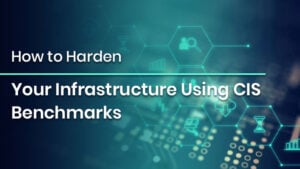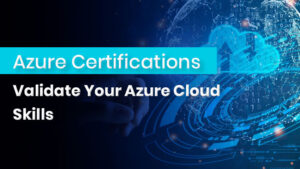
How to Harden Your Infrastructure Using CIS Benchmarks
How to Harden Your Infrastructure Using CIS Benchmarks Introduction As more organizations go faster with their digital transformation, the security and resilience of IT infrastructure
Limited-Time Offer! Get an exclusive 40% OFF on IPSpecialist Premium Monthly & Annual Plans. Use Promo Code: UPSKILLNOW at checkout.

How to Harden Your Infrastructure Using CIS Benchmarks Introduction As more organizations go faster with their digital transformation, the security and resilience of IT infrastructure

Azure Certifications – Validate Your Azure Cloud Skills Introduction Cloud computing has transformed the business landscape, providing scalability, flexibility, and affordability in a way

Top Cyber Security Trends: What Every Organization Must Know Introduction In an era marked by digital transformation, remote workforces, and rapidly evolving threat landscapes,
Table of Contents
Oracle Real Application Clusters (RAC) is an enterprise-level solution for distributing databases across multiple nodes. It enables organizations to improve availability and scalability by enabling fault tolerance and load balancing while increasing performance.
Oracle RAC uses Oracle Clusterware as the structural backbone to connect several servers, so they function as a single system. Additionally, Oracle Clusterware enables the use of the Oracle high-availability foundation for both single-instance and Oracle RAC databases. Due to Oracle Clusterware, you can create a clustered pool of capacity for use by any mix of single-instance and Oracle RAC databases. This article covers detailed knowledge of Oracle Real Application Cluster (RAC).
Without altering the application, the application developers can connect to any database instance in the cluster, decreasing downtime.
Customers can lessen the effects of service interruptions by automatically rerouting connections to remaining instances.
Oracle RAC offers complete database protection for its clients by safely replaying transactions during outages without degrading the user experience.
Real Application Clusters eliminate individual database servers as a single point of failure to provide clients with the most notable database accessibility. The database in a clustered server setup is shared across a pool of servers, implying that if one of the servers fails, the database will still function on the other servers. Oracle RAC not only enables users to continue preparing database workloads in the event of a server failure, but it also contributes to lowering the cost of downtime by reducing the amount of time databases are offline for planned maintenance activities.
Real Application Clusters provides all the software elements needed to efficiently send Oracle Databases over a network of servers and make the most of clustering’s performance, adaptability, and accessibility. Oracle Clusterware and Oracle Programmed Capacity Administration are integrated into Oracle Network Foundation, enabling efficient server and capacity asset sharing in a highly accessible and flexible database cloud environment.
Each hub in Oracle RAC is shut down as part of rolling fixes, and the fix is then connected. As soon as it occurs, the hub is restarted. The uptime for this alternative is consistently at or near 100% since a total shutdown is kept at a strategic distance by traveling independently to each hub. Even though some patches cannot be connected in this mode, you still have the fewest downtime-resolving features that will let you continue to be useful.
The administrations streamline their meetings by enrolling in their workload with Oracle RAC. They are also able to enlist the whole amount of work being done. Clients can be sent to the least-busy hub hosting an event for their specific services using this information. Client-side and server-side stack adjustments are both included. This makes it possible to continue working at the required rates without the same risks of data loss.
Unexpected setbacks have a much smaller impact on the user with Oracle RAC because it may be a node-based architecture than with comparable administrations. Clients connected to a fizzled event quickly build up to a new connection with the surviving events in the database to maintain accessibility. Since you are bringing your hub closer, reconnection is usually unnecessary.
Oracle RAC distributes data across multiple nodes via a shared disc architecture. Each node runs its database instance, which accesses the same data on the disc. When a user submits a query, it is routed to the appropriate node and processed before the user receives the results. This process contributes to quick response times while ensuring high availability and scalability levels.
Oracle RAC is a cluster database system that enables multiple instances of the same database to run on different servers, known as nodes, in a cluster. Distributing transactions and queries across all nodes improves reliability and performance. Furthermore, it can help reduce downtime by utilizing fault tolerance mechanisms to ensure that if one node fails, another will take its place without interruption in service. Furthermore, it can easily scale up or down in response to changing customer or workload demands. As a result, it is well suited for mission-critical applications requiring high availability.
For Oracle RAC to function properly, you must have your Check IPs, VIPs, and open IP addresses on the same open arrangement. The private IPs must be on a diverse arrangement than the open organization. It would help if you had your private and open IPs pingable as soon as the establishment begins. If one of the links in this chain needs to be entered, you may make an incorrectly organized arrangement mistake.
When you design the structure for Oracle RAC and Clusterware, you will notice that each hub within the cluster has specific requirements that must be met. It would help if you had two arranged interface cards, open interface names for each hub, and private interface names that are the same for all hubs. For high-speed organized connectors with a switch that supports gigabit ethernet, your organized connector must support TCP/IP, and the private interface must support UDP.
Compared to traditional single-node database systems, Oracle Real Application Clusters (RAC) provides organizations with improved availability, scalability, performance, reliability, security, disaster recovery capability, cost savings, manageability, control over resources, and more efficient backup operations. It employs a shared disc architecture to distribute data across multiple nodes so that when queries from users or applications are received, they are quickly processed on the appropriate node before being returned with results.
Oracle RAC is a valuable resource for any organization looking to build a dependable, scalable database architecture capable of handling mission-critical applications with minimal downtime or disruption. Oracle RAC ensures maximum performance while minimizing resource utilization, allowing businesses to focus on what matters most rather than worrying about their data infrastructure due to its high availability capabilities and easy scalability features.
Check out more blogs on Oracle:
Difference between Oracle and PostgreSQL: https://ipspecialist.net/difference-between-oracle-and-postgresql/
Difference between MySQL and Oracle: https://ipspecialist.net/difference-between-mysql-and-oracle/
Announcing Oracle Database Service for Microsoft Azure: https://ipspecialist.net/announcing-oracle-database-service-for-microsoft-azure/
Oracle Cloud Infrastructure – Basics: https://ipspecialist.net/oracle-cloud-infrastructure-basics/
© 2025 All rights reserved | Privacy Policy | Terms and Conditions | Sitemap | Cookie Policy




